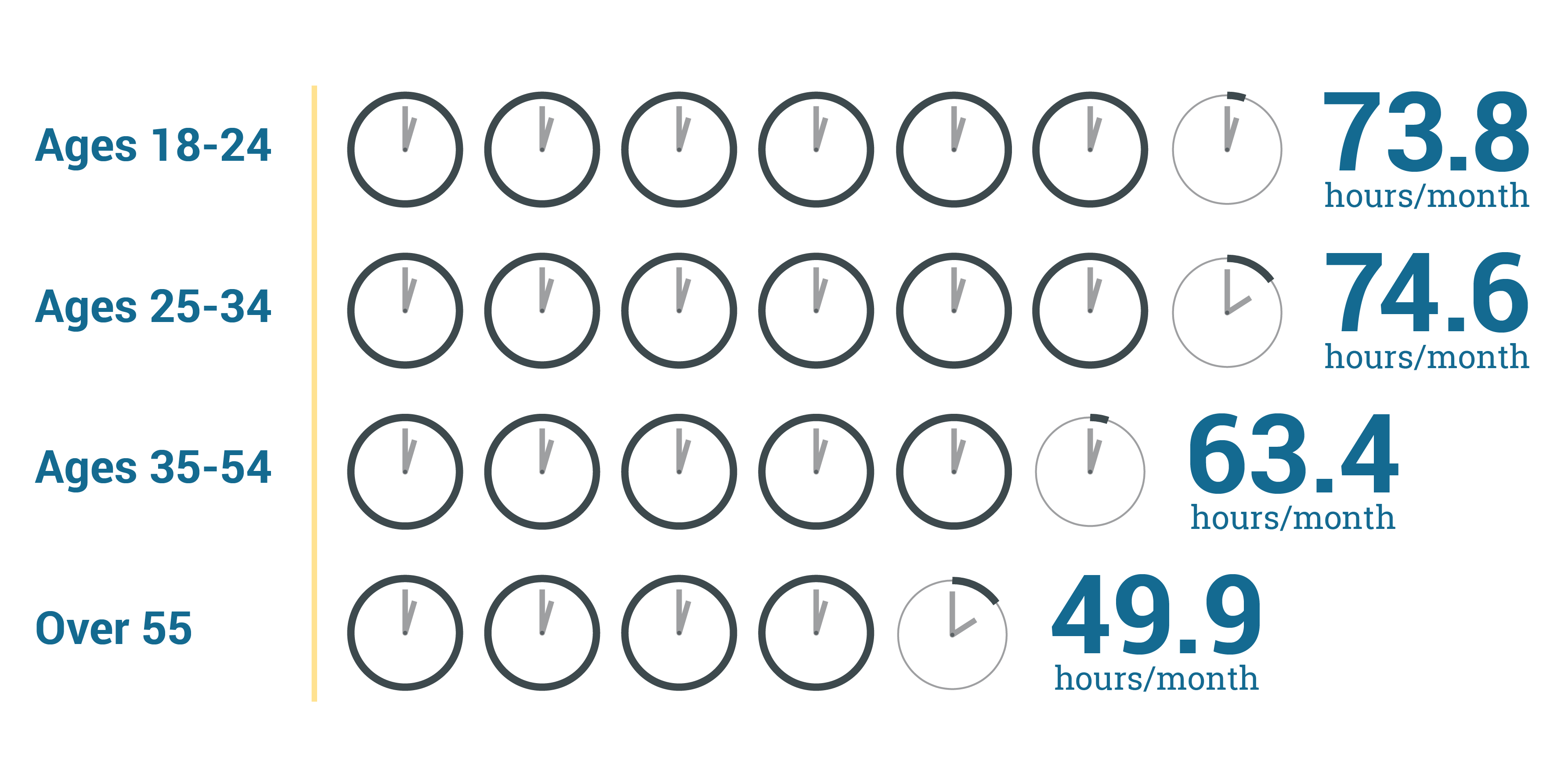3 Key Mobile App User Stats & Opportunities
Share to my network
In this article
Categories
Book a meeting
Connect with our team of experts to discuss your conversion and loyalty goals, and how we can help you achieve them faster.
Get a demoHockey legend Wayne Gretzky is often quoted as saying: “Skate to where the puck is going to be.” The reason to invest in a mobile app is similar: companies need to go where customer trends are going — on mobile. Building a strong mobile presence is the most effective way to drive engagement and, ultimately, revenue.
But where is the puck going to be? We’ve done a lot of research on this topic — and we’ve compiled many of these findings in a recent publication. Three key things jumped out at us to share and discuss:
-
Peak mobile app usage hours are between 8 p.m. and 9 p.m.
-
The genders use apps for very different tasks
-
As a mobile audience, Gen X is just as important as Millennials
Mobile Use Spikes After Dinner
Most “heavy duty tasks” that need to be performed on a laptop aren’t happening at night, especially not between 8 p.m. – 9 p.m., when mobile usage spikes and creates opportunities. It’s during this time that social media, gaming and entertainment apps see an uptick.
The Opportunity
This may be obvious, but mobile app users exhibit a pattern of usage that should not be ignored. You can pair engagement strategies such as in-app messaging with push notifications to meet users while they are following these daily patterns. This approach makes your app more effective, engaging and relevant to the user.
Gender Differences Apply to Apps Too
The mobile app ecosystem is only slightly dominated by women, who hang out in apps such as social media, weather, games, entertainment, books and shopping. But when it comes to fitness and health, women spend twice as much time as men in this category, while men outnumber women in news, music, sports and maps apps.
The Opportunity
Overall, encouraging user engagement with your app is the goal. There are many different strategies brands can take to thoughtfully engage both male and female app users:
-
Use audience segmentation to send personalized messages
-
Track a customer lifecycle to get an overall view of a user’s experience from the day they launch to present day
-
Send targeted in-app messaging to direct the app user to pages that will do the heavy lifting and provide relevant insights for messaging
Avoid a Singular Focus on Millennials
According to Flurry, 176 million people are “mobile addicts,” which is up 123% compared to the same period last year. But those users aren’t all the Millennials that we as marketers are so quick to focus on. A study commissioned by Compuware found that of the 3,534 people they polled, 45% of them between the ages of 35 and 45 used a mobile application in the past six months. Out of the 21-34 range, 35% used an app. Also, when it comes to time spent using apps, people age 25-to-34 log more hours per month on mobile apps than younger users.

The Opportunity
This data supports an app strategy that includes the Gen X demographic as a key audience instead of just focusing on the more commonly focused on Millennial user. As these users age, the app usage will evolve. The most common scenario includes more time with apps focused on work. According to a 2014 study, only 4% of the 700 responding companies said they use mobile apps to help with such things as supply chain management, logistics, purchasing, maintenance, service or sales reports. This number was very low, but the study also found that 100% of participants believed that the number will jump to at least 50% in the next two years — and it was published two years ago. Has your use of apps at work increased? We’re willing to bet it has, but we’d also be interested in your feedback on this subject.
Interested in More App Usage Insights?
The Anatomy of a Mobile App User explores other key areas and the opportunities they provide brands to increase overall engagement. You’ll find facts relevant to your industry, insights on how these stats should inform your mobile strategy and infographics that paint a clearer picture of your evolving customer.